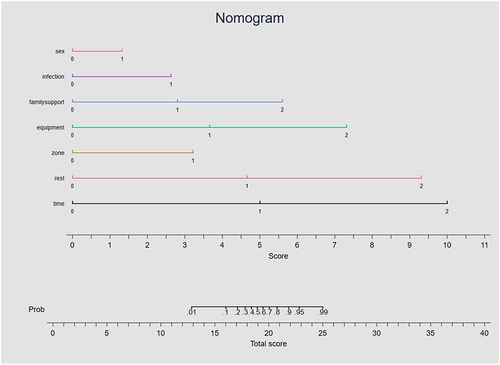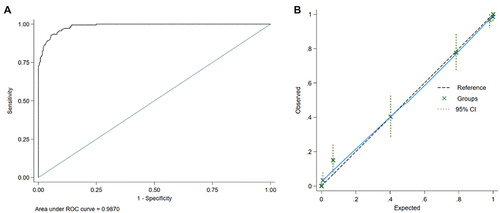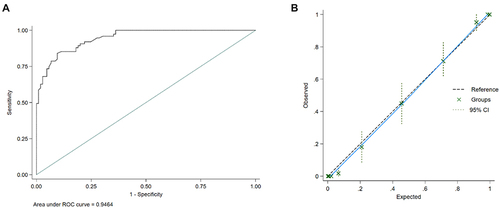Figures & data
Table 1 Demographic Characteristics and Baseline Data of the Study Sample
Table 2 Results from Univariate Logistic Regression Analysis
Table 3 Results from Multivariate Logistic Regression Analysis
Figure 1 The nomogram to predict the anxiety in medical staff during the period of epidemic prevention and control. “Time” indicates the participation time, “rest” indicates rest time, “zone” indicates the epidemic prevention area, “equipment” indicates epidemic prevention equipment, “infection” indicates the colleague infection.

Figure 2 Internal validation of the nomogram. (A) The ROC curve in the training set. (B) The calibration plot in the training set.

Figure 3 External validation of the nomogram. (A) The ROC curve in the validation set. (B) The calibration plot in the validation set.

Figure 4 Decision curve analyses. “Treat All” indicates the positive control that all subjects experienced treatment. “Treat None” indicates the negative control that all subjects experienced no treatment. “Pr(anxiety)” indicates the net benefit increment for the anxiety risk prediction using the constructed nomogram.

